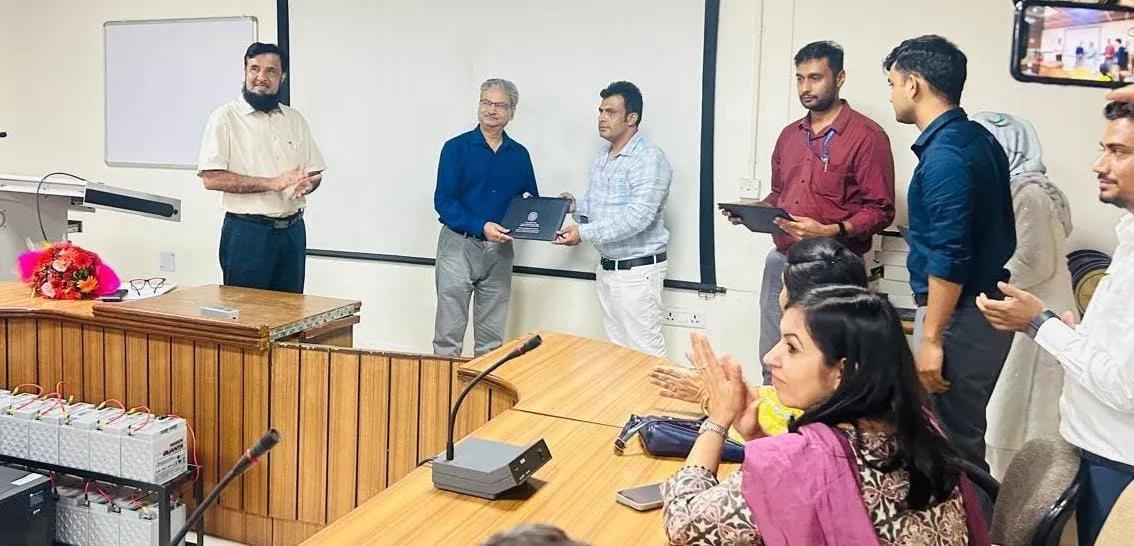Houston: A new study provided a deeper understanding of the vast diversity of T cell states, as well as their relationships and roles within the complex tumour microenvironment, bringing a new perspective to understanding immunotherapy efficacy in cancer.
A study led by The University of Texas MD Anderson Cancer Centre and findings were published today in Nature Medicine.
This new pan-cancer single-cell T cell atlas includes 27 single-cell RNA sequencing datasets, nine of which are unique to MD Anderson, and covers 16 cancer types. It provides the most detailed picture yet of the heterogeneity of T cells present within the tumour microenvironment, demonstrating how their phenotypic states, as well as the relative proportions of each state, play a critical role in determining the efficacy of immunotherapy and the likelihood of potential adverse effects.
"This kind of large dataset and comprehensive pan-cancer analysis provides the opportunity to see things that aren't visible when studying a single type of cancer or even a handful of cancer types," said corresponding author Linghua Wang, M.D., Ph.D. associate professor of Genomic Medicine. "We hope these high-resolution maps, including the thoroughly characterized T cell states, are valuable resources for facilitating future T cell studies and biomarker discovery."
One notable discovery from this study is the previously undescribed T cell stress response state, or TSTR. In prior single-cell studies, these T cells often were overlooked or considered to be artifacts related to tissue dissociation. However, with the extensive data available, the researchers were able to identify these cells as a clearly unique group, distinct from other CD4+ or CD8+ T cell subsets, and to validate their existence in situ using multiple spatial profiling methods.
TSTR cells can be thought of as 'stressed out' T cells and, just like a stressed person might be less effective at their job, they seem to be less effective at fighting cancer. While both TSTR cells and exhausted T cells may be dysfunctional, TSTR cells appear to follow a unique differentiation path, distinct from the trajectory of exhausted T cells. TSTR cells are characterized by high heat shock gene expression and, importantly, are seen at significantly higher fractions in both CD4+ and CD8+ T cells following immune checkpoint blockade therapy, particularly in non-responders. This suggests TSTR cells may play a role in resistance to immunotherapy. This new T cell state adds an additional layer to our understanding of the intricate biology of cancer and provides a potential target for future therapies.
"The fact that these TSTR cells are found in many different types of tumors opens up a whole new world of possibilities that could have high translational potential," Wang said. "Investigating the mechanistic causes of stress response in T cells, understanding how these stressed T cells are induced in the tumor microenvironment, and learning how to stop or reverse this TSTR state could catalyze the development of more effective therapeutic strategies that may bring the benefit of immunotherapy to more cancer patients."
This work also underscores the value of large, integrative datasets in oncology. This pan-cancer T cell atlas exemplifies the power of big data to unravel the complex landscape of T cells within tumors. The researchers described a total of 32 T cell states in this study, and further identified seven subpopulations within the CD4+ regulatory subset, five within the CD4+ follicular helper T cell population, and eight states among proliferating T cells.
These findings all highlight the extensive heterogeneity of T cell states within the tumor microenvironment and the need to further understand how these states contribute to disease progression and immunotherapy response.
"There are still many questions left to answer," Wang said. "One of the limitations of this study is we don't have the corresponding T cell receptor data for most of the datasets analyzed. We are not sure what triggers the TSTR state, and we don't know from which T cell subset(s) they originate. It also is unclear whether these TSTR cells are specific to tumor cells and how they communicate with and influence other cells within the tumor microenvironment."
The research team has shared their T cell atlas with the wider research community through the Single-Cell Research Portal, a user-friendly, interactive web portal. This portal, developed by the team, allows both internal and external users to visualize and query the atlas without the need for bioinformatics skills.
The team has also developed a tool named TCellMap, which enables researchers to automatically annotate T cells from their datasets by aligning with the high-resolution T cell maps generated by this study. Wang expressed her hope that these resources will prove valuable to scientists aiming to perform an in-depth analysis of T cells, leading to further discoveries and ultimately enhancing strategies for T cell therapy. —ANI

